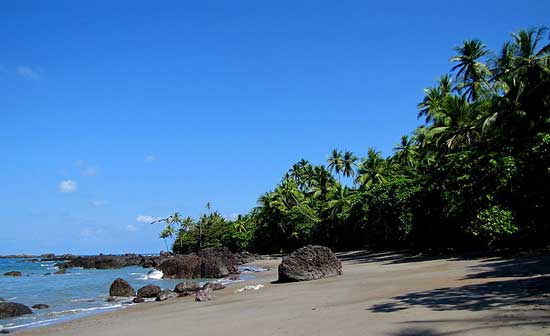

When you hear the word “filibuster” it usually means a scheme used in Congress to talk and talk and talk, aimed at delaying a vote (or not letting it come up at all).
But there’s another kind of filibuster you don’t hear much about. The word also means “an irregular military adventurer.” Simply put, mercenaries or soldiers of fortune. Like Sir Francis Drake, who roamed the Caribbean under the skull and crossbones, but who was actually paid by the English court to attack Spanish ships. Or Prince Frederick II, who was hired by Great Britain to lead 30,000 German mercenaries during the American Revolution.
When it comes to American filibusters of that ilk, it would be hard to top the exploits of a colorful character named William Walker. Born in Nashville, Tenn., in 1824, he was making headlines by the time he turned 28 – when he put together an army of 300 scraggly “mercs” and tried to invade parts of Mexico.
Walker’s troops actually captured some hefty (but mostly unpopulated) areas of Baja California and Sonora before the Mexican government booted them out.
Fast-forward to 1855, and Walker shows up again – this time in Nicaragua, where a revolt threatened to unseat the government. Walker and his private army were hired by American billionaire Cornelius Vanderbilt to end the rebellion (which also threatened Vanderbilt’s interests in the country, mainly a cross-country water transit system).
Walker earned his keep and sent the rebels packing. But then he took over the government, declared himself president and renamed the country “Walkeragua” (with English as its official language). While he was at it, he also took over Vanderbilt’s transit system.
Vanderbilt retaliated by getting neighboring Costa Rica to declare war on Walker.
A key battle took place at Rivas just north of the Nicaragua/Costa Rica border, and when the dust settled Walker had cleared out. Costa Rica had a national hero.
Here’s what happened:

On April 11, 1856, 3,000 Costa Rican troops crossed the border to fight Walker’s forces at Rivas. At the high point of the battle, the Costa Ricans found themselves pinned down by Walker’s men, who’d holed up in a strategically located building. A Costa Rican drummer boy saved the day when he volunteered to toss a torch on the thatched roof of the building, even if it meant exposing himself to heavy fire.
The lad’s plan worked. The enemy high-tailed it out of the blazing building, letting the Costa Ricans move on to occupy the town. But the victory turned out to be bittersweet because the boy died in the fight, gunned down by an enemy sniper.
The boy’s name was Juan Santamaria, and he’s remembered as Costa Rica’s national hero in everything from songs, parks, streets and statues to the name of the country’s main airport. If you happen to be there on April 11, you’ll find yourself enjoying a national holiday in his honor.
Footnotes: Walker’s end came in 1860. After a failed foray in Honduras, he ended up facing a firing squad of local federales. He was 36 years old at the time.
Walker’s exploits were dramatized in the 1987 movie Walker starring Ed Harris. The critics generally panned it when it first hit the screen, but it has since become an American classic.
If You Go
Costa Rica Tourism Board
- Life of a Champion: Exploring the Muhammad Ali Center in Louisville - April 19, 2024
- What It’s Like to Live as an Expat: Lake Chapala, Mexico - April 18, 2024
- Top 5 Spots for Stargazing in North Carolina - April 17, 2024
